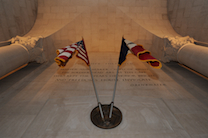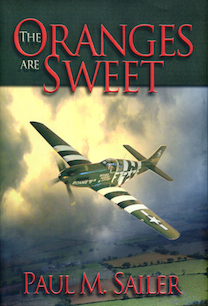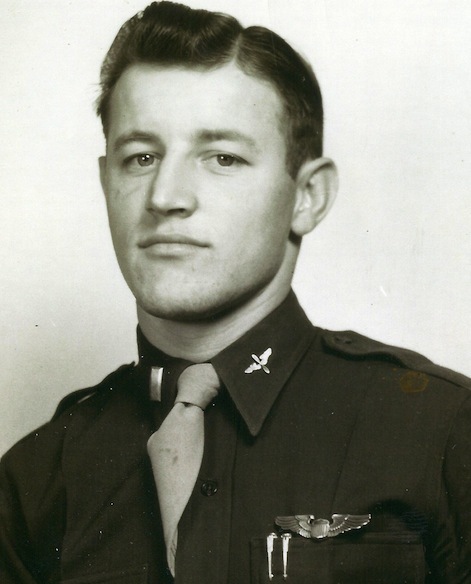
AMES, Iowa -- An observance at Iowa State University will honor two former students who served and died in military service during World War II. Although their names were previously engraved on the walls of the Gold Star Hall — the war memorial in the university's Memorial Union — their lives will be remembered at a ceremony at Iowa State, Monday, Nov. 12.
One was a pilot from Hill City, Don Beerbower, who died while bombing German airfields in France.
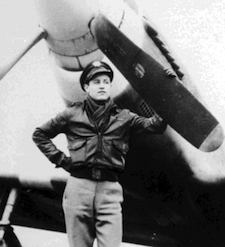
Former students are eligible for name placement in ISU's Gold Star Hall if they graduated from or attended Iowa State full time for one or more semesters, and died while in military service in a war zone. As names become known, they are added to the wall and the soldiers are remembered in the Gold Star Hall Ceremony.
A born leader
The youngest of three children, Beerbower was born Aug. 26, 1921, in Kenaston, Saskatchewan. Shortly before his birth, Beerbower's parents had moved to a wheat farm near there there from Iowa. But drought caused the family to move again — this time to Wadena, Minn. Beerbower grew up nearby in Hill City.
Beerbower helped with farm chores and drove the creamery truck on delivery routes. He was active in church, served as a batboy for the high school baseball team, and was a dedicated Boy Scout and Eagle Scout. In high school, he was class president, played baseball and basketball, competed in speech contests, acted in the class play and received the American Legion Citizenship Award.
College at the time of war
After graduation in 1939, Beerbower went to work for his father. He spent as much time as possible with childhood sweetheart Elayne Kutcher.
The family planned for Beerbower to take over the creamery business. In preparation, he enrolled in a two-year creamery operation course at Iowa State College. He started school in the fall of 1940 — just as the U.S. government instituted the draft at the start of World War II.
In Ames, he became close friends with Glenn McKean, another Iowa State student studying creamery operations. In addition to their similar backgrounds, the two shared a mutual interest in becoming military pilots.
At Christmas, Beerbower and Kutcher announced their engagement. While continuing dairy classes in 1941, he took the Army's air cadet program exam. On Jan. 24, 1942, Beerbower and McKean took the oath of enlistment.
The Bonnie B
In February, they reported to Higley Field, Ariz. After completing a four-week course in preflight training, they reported to the Air Force Training Detachment in Glendale, Ariz., for Primary Flying School. Although 42 percent of the class failed to complete training, Beerbower and McKean passed. They were sent to Basic Flying School at Minter Field, Bakersfield, Calif., on May 28. Sadly, on June 9, McKean was killed in a flight training accident.
On Sept. 29, 1942, at Luke Air Force Base, Arizona, Beerbower received his wings and was commissioned a second lieutenant. That afternoon, he and Kutcher married.
The following May, Elayne Beerbower gave birth to premature twins. Dawn Marie died shortly after birth. Bonnie Lea survived and remained in the hospital for several weeks. Beerbower's Army Air Corps plane bore the name of the daughter he adored: "Bonnie B."
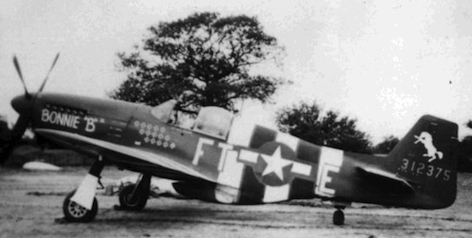
On Oct. 21, 1943, Beerbower left for England where he was assigned to the 353 Fighter Squadron, part of the 354 Fighter Group of the 9th Air Force. He was assigned a brand-new P51B Mustang. It was an agile, well-armed machine rated at 1,520 horsepower — truly a “pilot’s dream."
Triple ace
Due to his excellent shooting skills, Beerbower lead the 9th Air Force in victories. He had learned marksmanship at an early age, hunting duck, grouse and deer in the brush land around Hill City. Aiming and firing at a moving target from a moving airplane was far more difficult, but he excelled at it.
Read about the other Gold Star honoree Allan James Ewoldt.
A fighter pilot who has brought down five or more enemy aircraft was called a flying ace. From December 1943 to Aug. 9, 1944, Beerbower became a triple ace, shooting down more than 15 German planes, making him the second highest ace in the 9th Air Force.
Due to pilot losses and Beerbower's own advancements based on flying and leadership skills, Beerbower was promoted to major and made squadron commander in June 1944 — less than nine months after his arrival in Europe. At only 22 years old, he already was a great fighter pilot, respected and liked by the men in his squadron.
A fellow squad member said: “We always felt like he was a good leader. We knew that he planned a mission to maximize results and minimize loss. We knew he was not interested in taking credit himself. He was always giving credit to the other pilots, but not grandiosely. He was a guy everyone believed in and liked to follow. Some people you just like to follow because you have confidence in them. It was a comfortable place to be with Don.”
In July 1944, Beerbower received his first Silver Star medal. The third-highest military decoration for valor in the U.S. Armed Forces, it is awarded for gallantry in action against an enemy of the United States.
A true hero
On Aug. 9, 1944, Beerbower led his flight on a daring maneuver to destroy a German airfield near Reims, France. It was a dangerous mission: The field was well protected with anti-aircraft, and there was no element of surprise. On a first pass, enemy aircraft were hit on the ground. By the time the fighters formed for a second pass, the airfield’s defenders were prepared. Beerbower demolished one gun emplacement and aimed for a second. His plane was hit, damaging a wing. Squad mates watched the plane become disabled and observed that Beerbower was hit. The Bonnie B plunged to the ground. Beerbower did not survive.
Brig. Gen. James Howard spoke these words: “Beerbower was one of the finest. He was quiet, athletic and absolutely fearless … We were deeply saddened by his loss … I considered him the greatest fighter pilot in the European theater. I’m sure that if it hadn’t been for his untimely death, he would have gone on to be America’s top ace.”
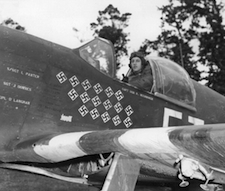
Gen. Felix Michael Rogers stated: “He died as he lived setting a thrusting example for the rest of us. I’ve carried that example with me always.”
Albert Feigen, squadron historian, said, “As long as any one of us remains, the name and the character and the heroism of Don Beerbower will be remembered.”
On December 11, 1944, Beerbower was awarded two medals posthumously for his brief time in Europe: He received a second Silver Star for “outstanding heroism and devotion to duty, reflecting the highest credit upon himself and the Armed Forces of the United States.”
And Beerbower was awarded the second highest medal in the Army Air Forces — the Distinguished Service Cross — second only to the Medal of Honor. The award citation stated: “… Maj. Beerbower made an experimental pass at the field destroying an enemy plane and a gun emplacement. Then, while his squadron swept over the field from one direction, he fearlessly attacked from another quarter, boldly exposing himself to concentrated fire from all sides of the field but effectively screening his comrades from the intense ground fire. Maj. Beerbower’s airplane was struck repeatedly and crashed into the ground. The outstanding heroism and devotion to duty displayed by Maj. Beerbower on this occasion reflects the highest credit upon himself and the Armed Forces of the United States.”
Beerbower also received the Distinguished Flying Cross with two oak leaf clusters, Air Medal with 25 oak leaf clusters, Purple Heart, American Campaign Medal, several campaign medals and the British Distinguished Flying Cross. He is buried in the United States Military Cemetery in Epinal, France.

